Located in central France, just two hours away from Paris, the Loire Valley has always been a magnet for the French elite. Lured by the region’s spectacular scenery and fine wines, many aristocrats and kings of France came to live in the lush countryside of the Loire Valley, building fairytale châteaux and impressive Renaissance-era castles.
The Loire Valley castles are as diverse as they are numerous (over 300). Many of them have been mentioned in famous books about France. Some are big and impressive and have left their mark on the history of France. Others are smaller, less known and not as historically important, but equally charming and romantic.
But beyond their beauty, the Loire Valley châteaux are an important expression of the region’s history. In times of war these castles were transformed into defense fortresses. During the times of peace, the châteaux were the focal points around which towns and villages grew.
Table of Contents
10 MUST-SEE CASTLES IN THE LOIRE VALLEY
If you are taking a road trip in Northern France, you should make it a point to visit some of the châteaux in the Loire Valley. These castles are absolutely unique. While most of them are culturally and historically significant, seeing them all would be very difficult. So out of the 42 castles that make up the Loire Valley UNESCO Heritage list, here are the most beautiful ones:
1. Château de Chenonceau
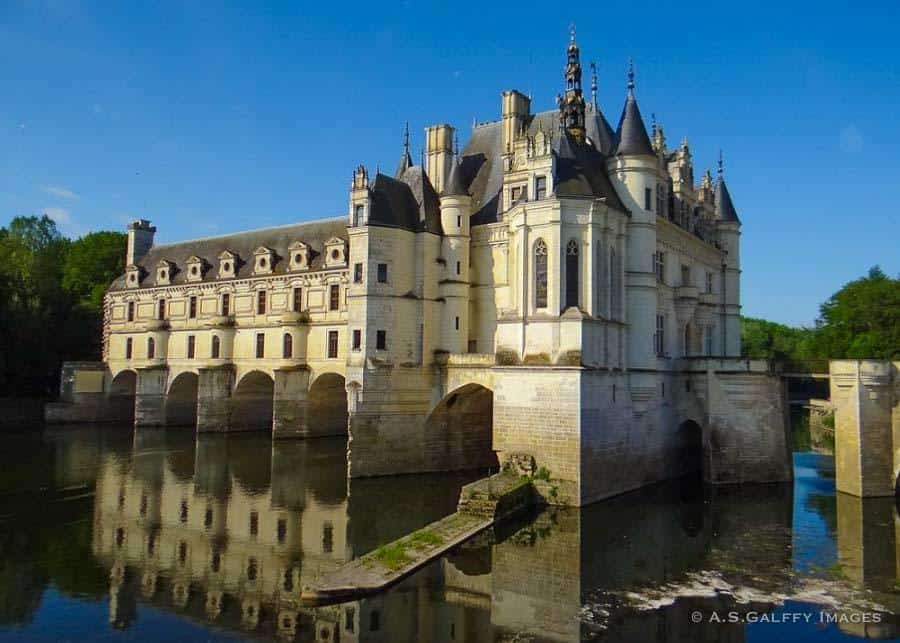
Of all the castles in the Loire Valley, Chenonceau was my favorite one. The château is not only sumptuous, opulent and elegant. It’s a testament to the power of women.
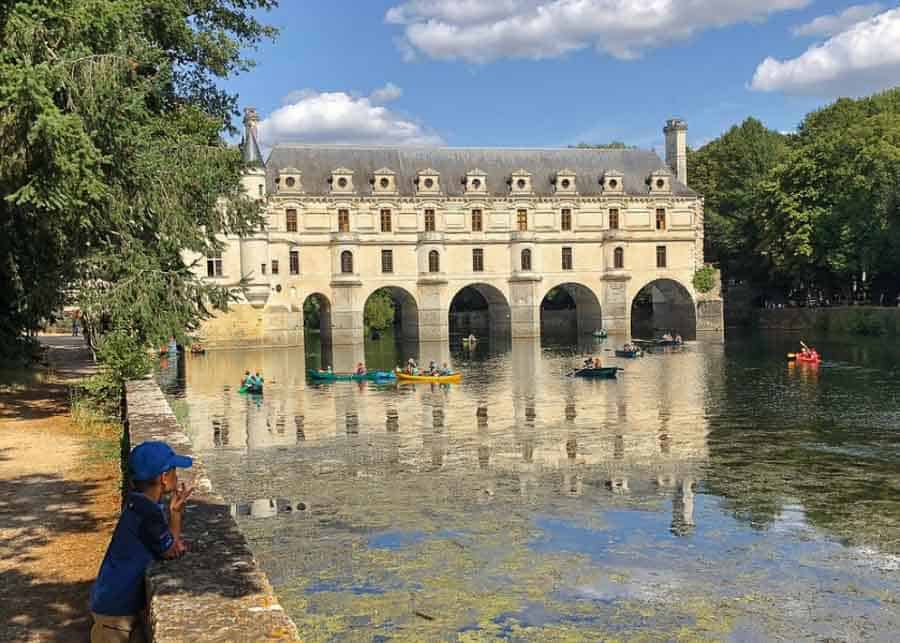
The story of Chenonceau is pretty much the story of the strong and powerful women who restored it, loved it, and fought over it. Not surprisingly the beautiful Château de Chenonceau was nicknamed Le Château des Femmes (the Women’s Castle).
Château de Chenonceau was acquired by King Francis the First in 1535, as part of a debt settlement. Later, King Henry II decided to offer it not to the Queen, but to his mistress, Diane de Poitiers.
Over the course of history, the castle was into the hands of many women and fulfilled many roles. During the First World War the castle was converted into a military hospital. In the Second World War, the Grand Gallery at Chenonceau became the sole point of access to the free zone. As a result, the castle owners at the time helped to smuggle out people fleeing the Nazis.
| Opening hours: July-Aug, 9 am- 8 pm; reduced hours during other months |
| Admission: Adults €15, children €12; audio guide €4.00. |
2. Château de Chambord
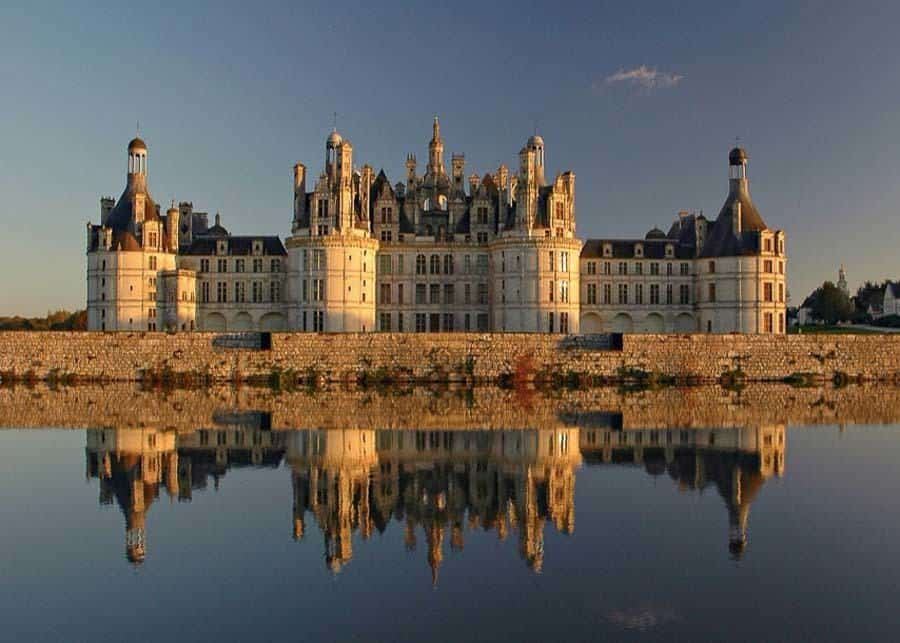
The grandiose structure of the Château de Chambord is nothing short of amazing. But what’s even more amazing is that Chambord wasn’t actually a château, but rather a hunting lodge of gigantic proportions.
In 1518, when King François I began the construction of Chambord he intended the castle to be his hunting lodge in the Loire Valley.
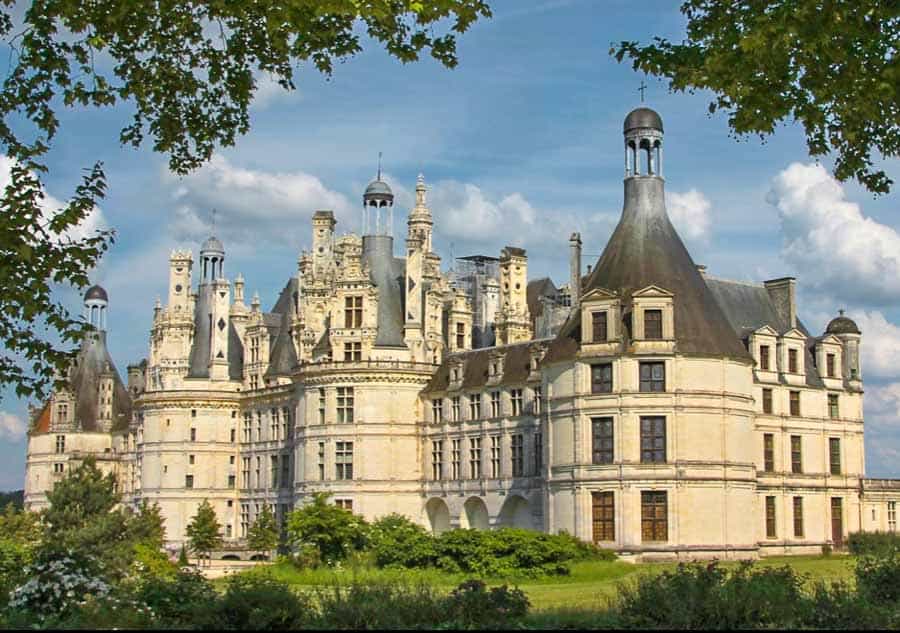
The genius behind this exceptional architectural creation still remains a mystery. It is certain that many of the plans were drawn by Leonardo da Vinci, who lived for a while at Château de Clos Luce. However, given his death in 1519, Da Vinci could not have directed the entire construction.
The castle’s incredible towers are visible from mile away, when you travel the tree-shaded roads in the Loire Valley towards Chambord. The genius behind this exceptional architectural creation still remains a mystery.
| Opening hours: March-Oct. 9 am- 8 pm; Nov.-Feb. 9 am to 5 pm. |
| Admission fees: Adults €14.50, children 18 and under enter free. |
3. Château de Blois

Château de Blois is one of the most important castles in the Loire Valley and a major site in France’s history. The château used to be the favorite residence of the kings of France during the Renaissance period. 7 kings and 10 queens of France lived here.
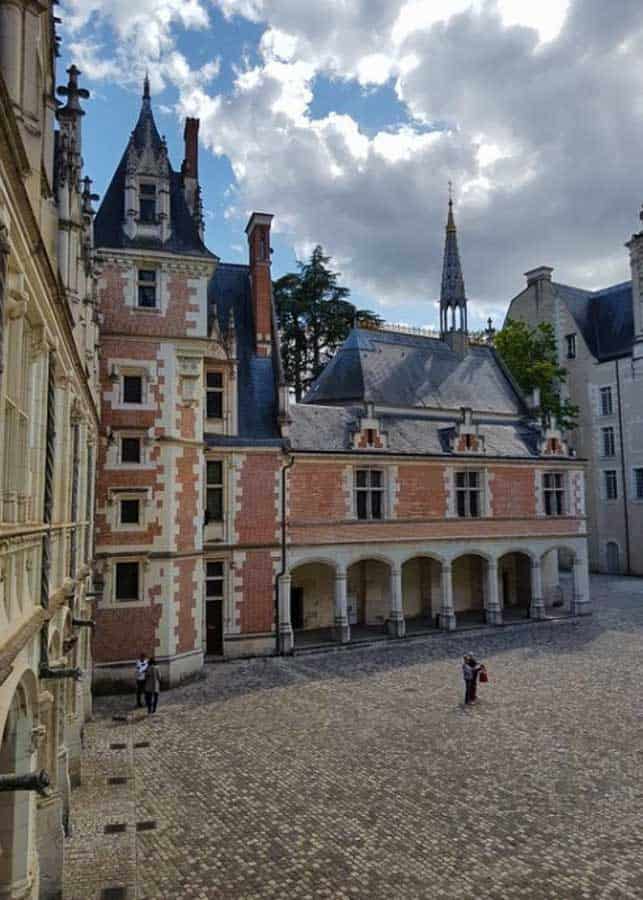
The construction began in the 13th century and ended in the 17th century. Over the corse of its history, Château de Blois suffered many changes, being modified according the the tastes of those who lived here. While the castle doesn’t share the majesty and grandeur of its neighboring Chambord, it’s nothing short of an architectural delight.
Château de Blois was the scene of fights, royal intrigue, and betrayal. One of the most notable affairs that took place here was the assassination of the Duke of Guise by the order of King Henry III. This was the place where King Louis XIII exiled his mother, Marie de’ Medici.
| Opening hours: July-Aug, 9 am- 7 pm; reduced hours during other months |
| Admission fees: Adults €12, children €6.50; audio guide €3.00. |
4. Château d’Amboise
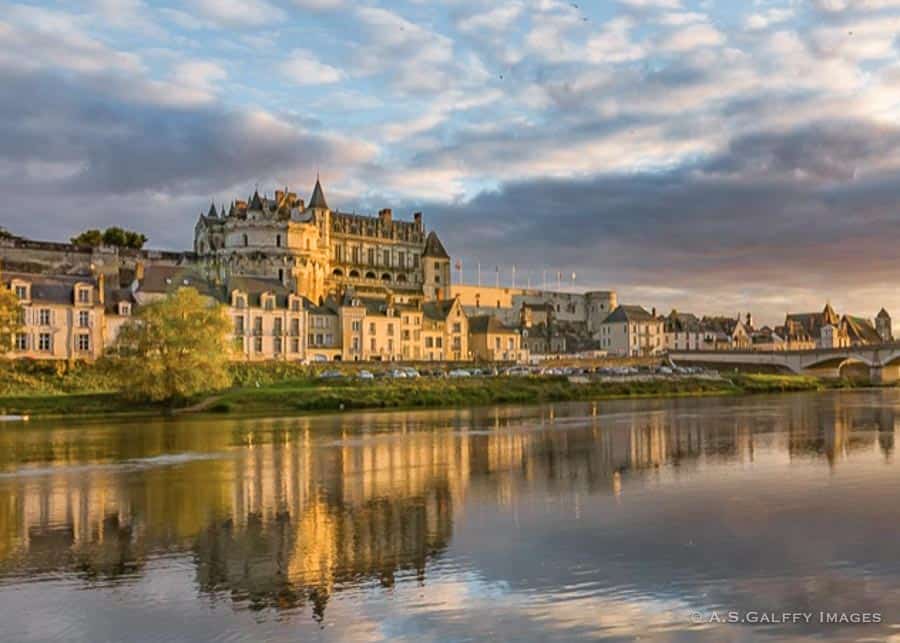
The Château d’Amboise is inextricably linked to the history of France. For over 400 years, the castle was the place of residence for the kings of France.
Château d’Amboise reached the peak of its glory during the reign of François I, who was a great fan of Italian art and architecture. Therefore, he employed several Italian artists to decorate the palace., one of which was Leonardo Da Vinci himself.
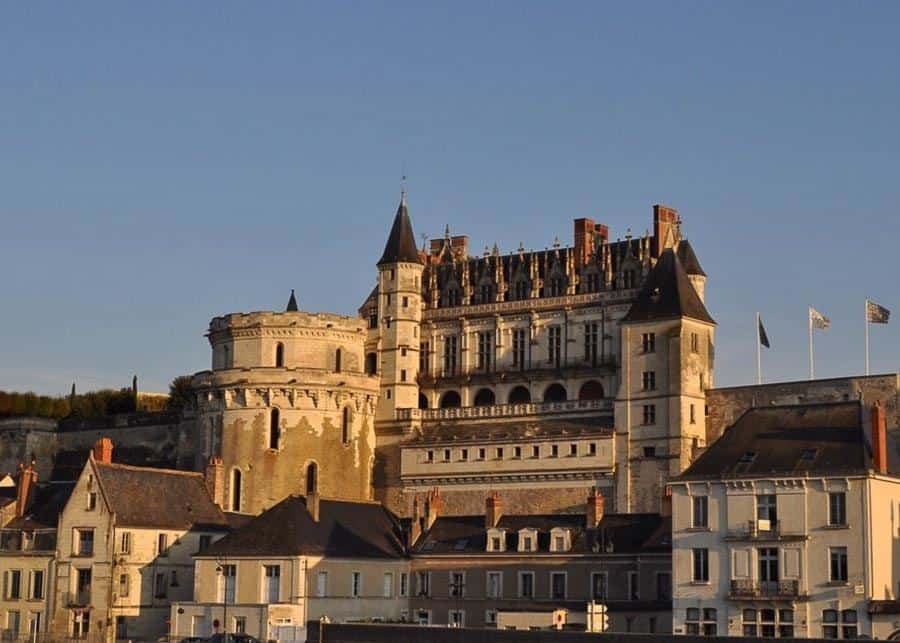
The darkest moment in the history of Château d’Amboise was undoubtedly the Conspiracy of Amboise, an unhappy event that took place during the Wars of Religion.
| Opening hours: Jun – August 10:00 a.m to 6:30 p.m. (reduced hours during other months) |
| Admission fees: Adults: €13.10; Students: €11.30; Children: €9.00 (children under 6 enter free) |
5. Château de Clos Luce
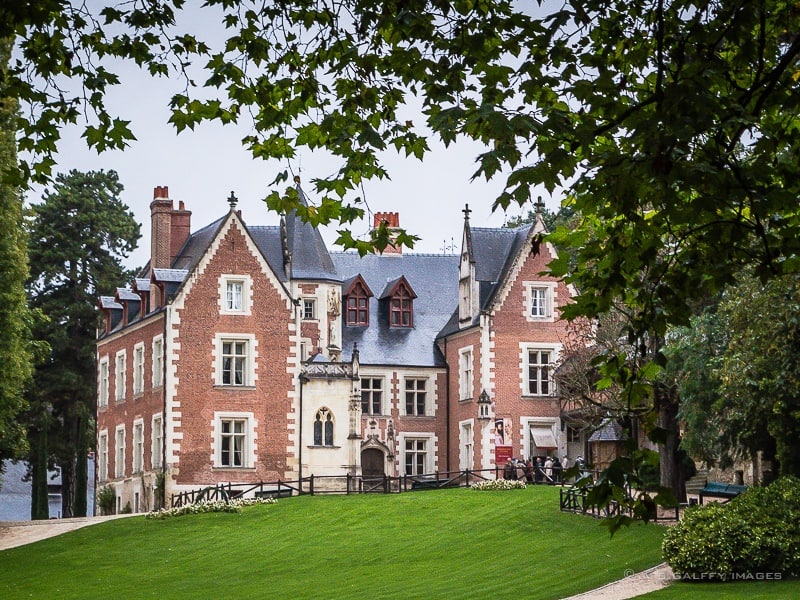
You cannot visit the town of Amboise and its impressive château without also visiting nearby Chateau du Clos Luce, which sits just about 500 meters away from the royal castle.
Château du Clos Luce has nothing of the extravagance of the Loire Valley castles. On the other hand, it can brag about something that none of the others can: the castle was the official residence of one of the greatest minds of all times, Leonardo da Vinci.
Built by Hugues d’Amboise in 1471, the palace has known several famous owners such as the King Charles VIII and Francis the First. The château was known as the ‘summer house’ of the French royalty.
King Francis the First had a very high esteem for Da Vinci, so he offered him the Château du Clos Lucé, where the artist spent the last 3 years of his life.
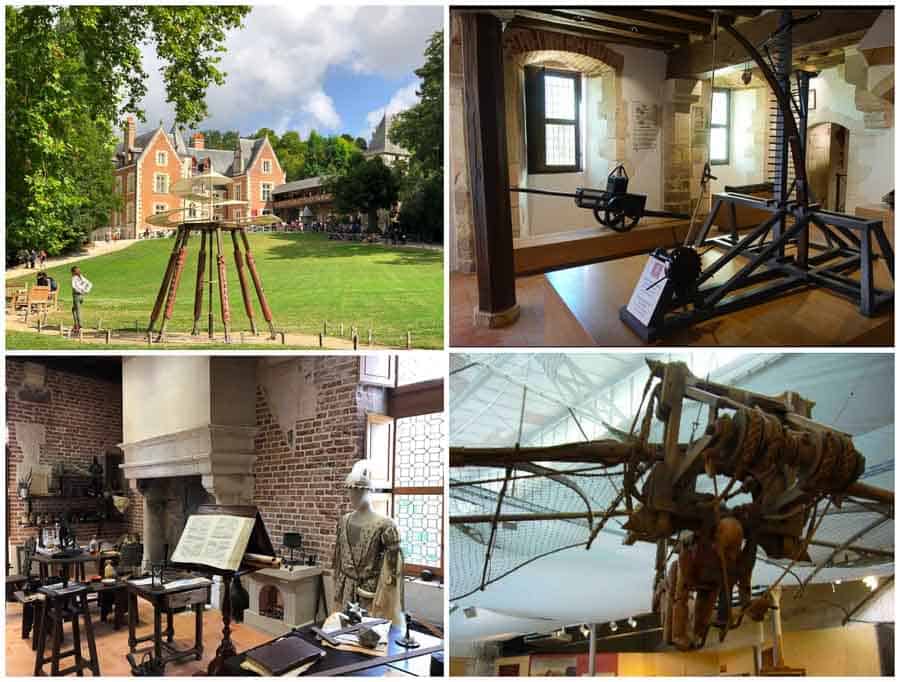
Although not very big, the château is really beautiful and atmospheric and displays a great number of models and engineering projects created by Da Vinci.
| Opening hours: 9 a.m. to 7 p.m. |
| Admission fee: €3.90/person. |
6. Château de Sully-Sur-Loire
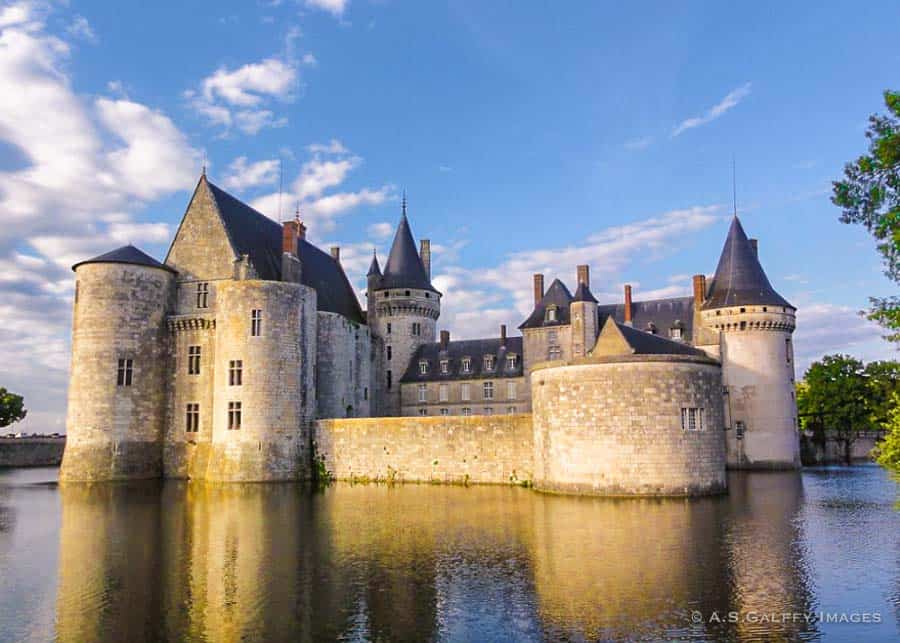
Château de Sully may not be one of the Loire Valley’s most important castles, but it’s still one of my favorites. The way its silhouette is reflected in moat water that surrounds it make the castle a great subject for photography.
The château was built over a 14th-century medieval fortress for the Maréchal Gaspard de Saulx, who was an important figure at the court of King Henri II.
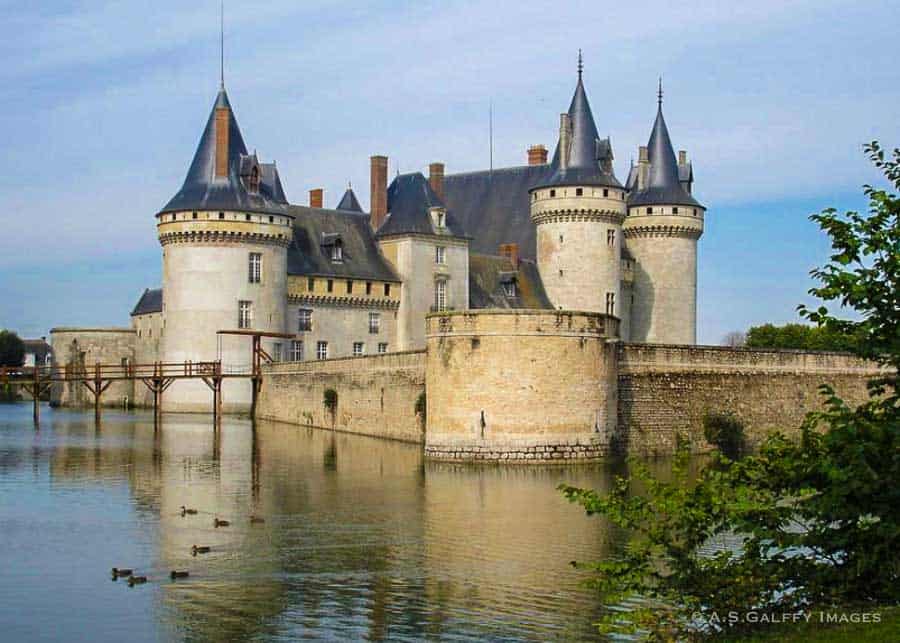
In 1602, Maximilien de Béthune, Duke of Sully, acquired the castle and began an extensive work of restoration. The castle stayed in the family until 1962, when the Département du Loiret acquired and declared it a Historic Monument.
Over the course of history, Château de Sully has suffered many trials and tribulations: the French Revolution in 1789, a devastating fire in 1918, and the bombardments of World War II. But the castle also had its days of glory, when it welcomed many celebrities, like King Louis XIV, Voltaire, Joan of Arc, Mazarin and Anne of Austria.
| Opening hours: July-Aug, 9 am- 8 pm; reduced hours during other months |
| Admission fees: Adults €8, children €5; audio guide €4.00. |
7. Château de Chaumont
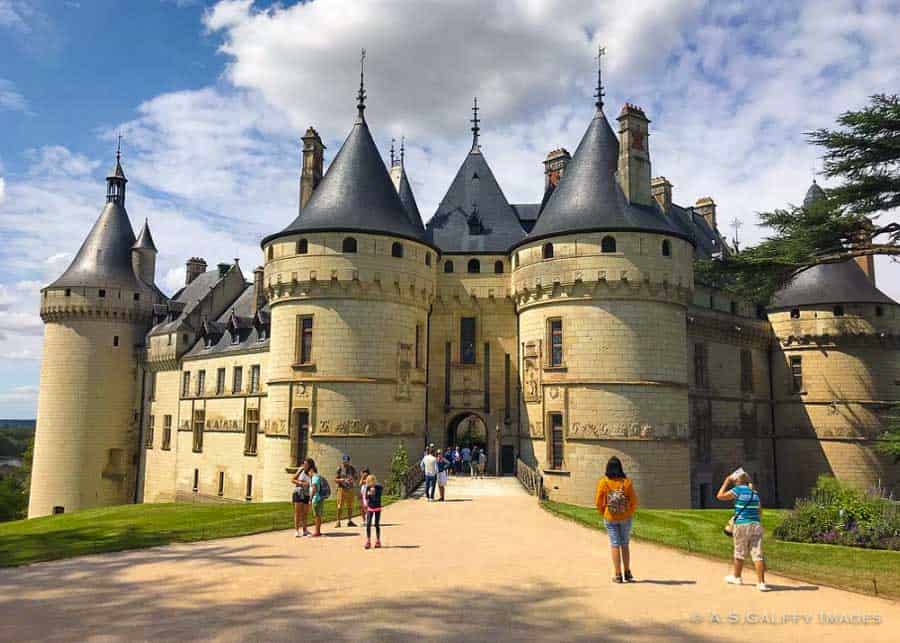
Just when you think you’ve seen the best castles in the Loire Valley, here comes another one. Château de Chaumont was erected in the 10th century by Odo I, Count of Blois, as a defense fortress.
In 1455, King Louis XI burned down the castle to punish its owner at the time – Pierre of Amboise – for his involvement in the anti-royal revolt known as the ‘League of the Public Weal‘.
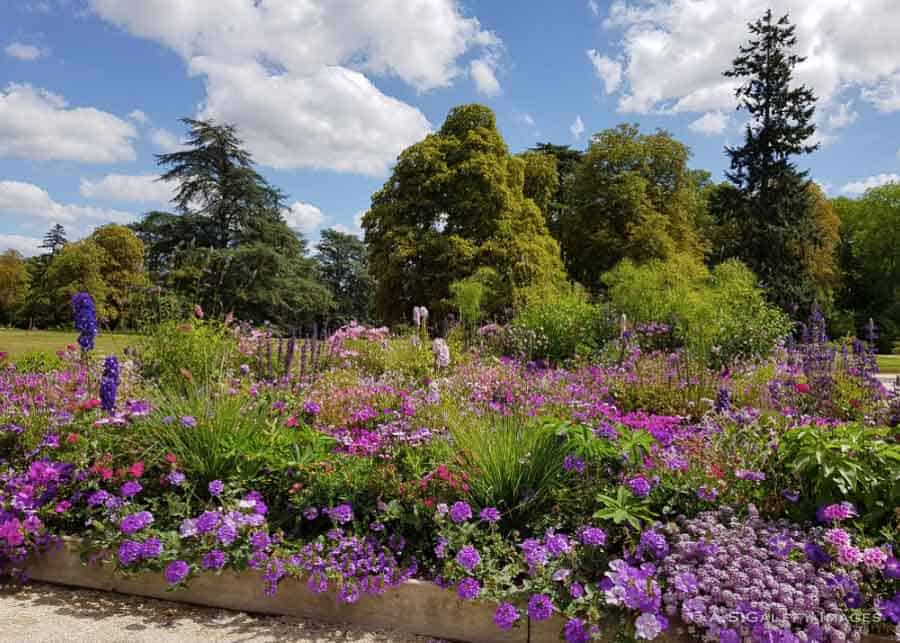
Later on, Charles I d’Amboise rebuilt it and turned it into the beautifully ornate château that you see today. Château de Chaumont remained in the Amboise family for almost 500 years.
The visit will take you through many furnished rooms, the stables and the beautiful castle gardens.
| Opening hours: June to Aug. 10:00 am – 8:00 pm; reduced hours during other months. |
| Admission fee: €14.00; €33.00 for the Castle and the Garden Festival in summer. |
8. Château Azay-le-Rideau
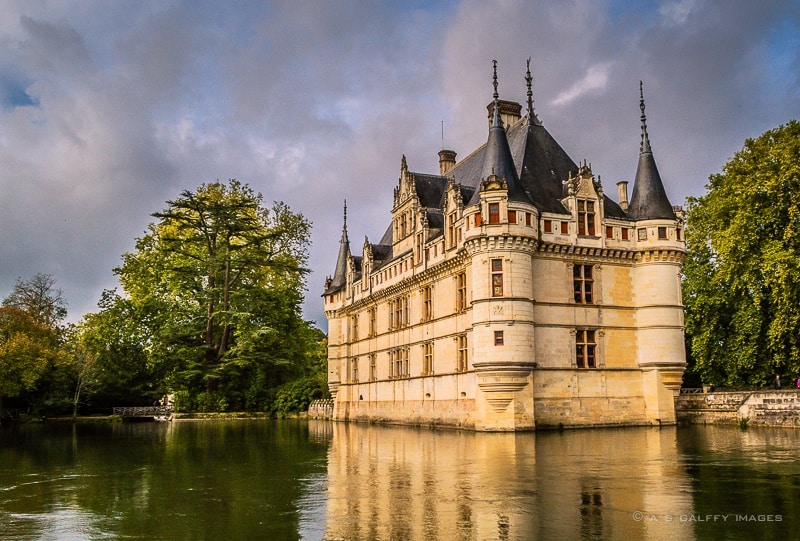
Few castles in the Loire Valley have the charm of Château d’Azay-le-Rideau. Although it’s neither grandiose, nor historically important, the château has a particular charm that attracts thousands of visitors every year.
Château Azay le Rideau was erected in the mid 1500s by Gilles Berthelot, the Mayor of Tours, on the ruins of a formed 12th century fortress. Berthelot was planning to build a dream castle, meant to reflect his social status.
Unfortunately, Berthelot was never able to finis his dream castle. Due to some unfortunate circumstances he was forced to go into exile.
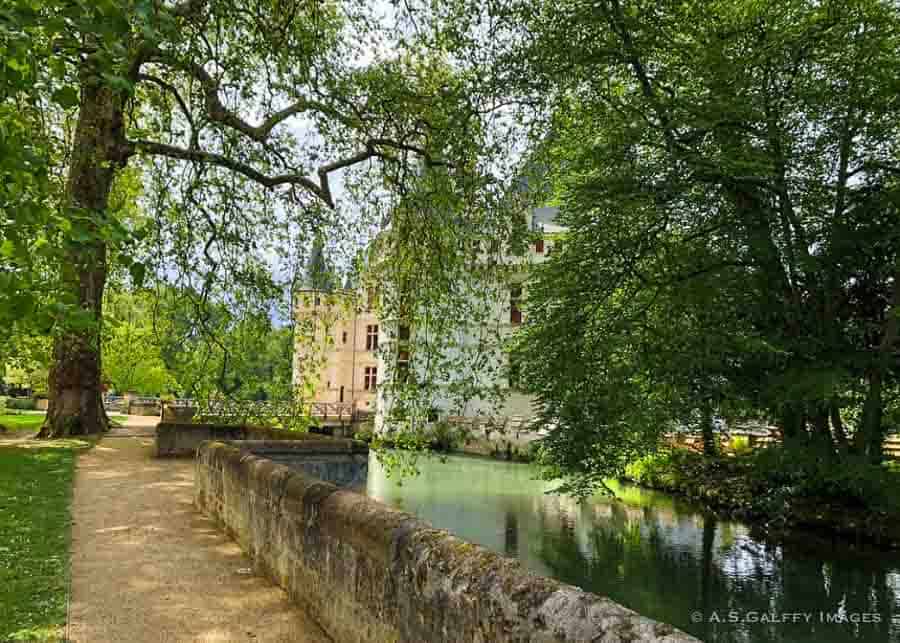
Despite being unfinished, the château doesn’t seem to be missing anything: the structure is perfectly symmetrical, elegant and well proportioned. It’s also surrounded by a beautiful English garden.
| Opening hours: open daily between 9:30 am to 6:00 pm; closed January 1st, May 1st, and December 25th. |
| Admission fee: €11.50/person; children (up to 18 years of age) are free of charge; audioguides: €3.00 |
9. Château de Cheverny
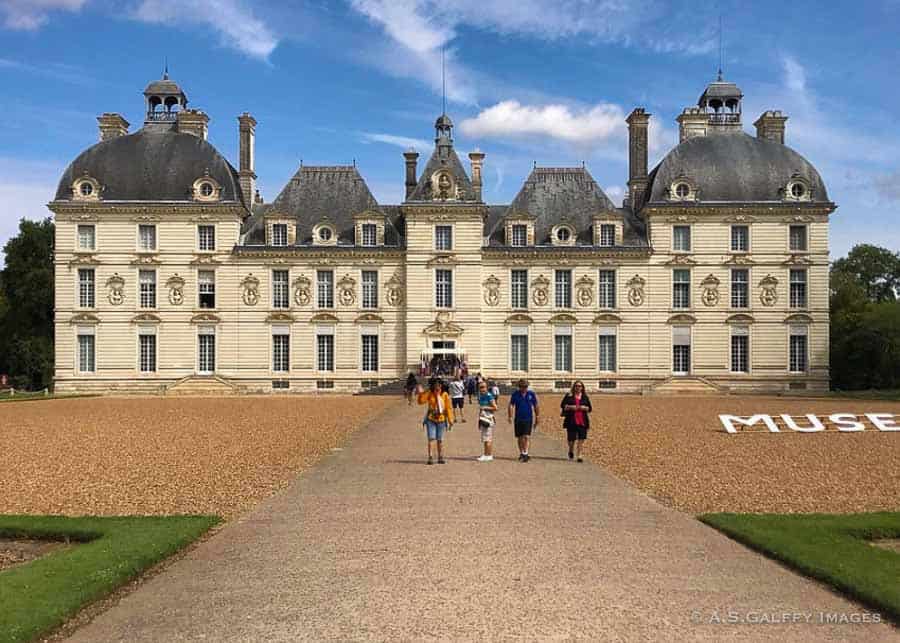
The Château de Cheverny is located about 9 miles south of the city of Blois. Built between the years of 1604 and 1634, the immaculate and perfectly symmetric castle.
Henry Le Mareschau, the first owner of Cheverny, sold it to Jean Huraults in the late 14th century. The lands around the castle were purchased later on by Henri Hurault, Count of Cheverny, a lieutenant-general and military treasurer for Louis XIII.
The Château de Cheverny has changed very little over the hears. Part of the reason is that the castle remained in the hands of the same family over the years. Today, the château is still owned and inhabited by the descendents of the Hurault family.
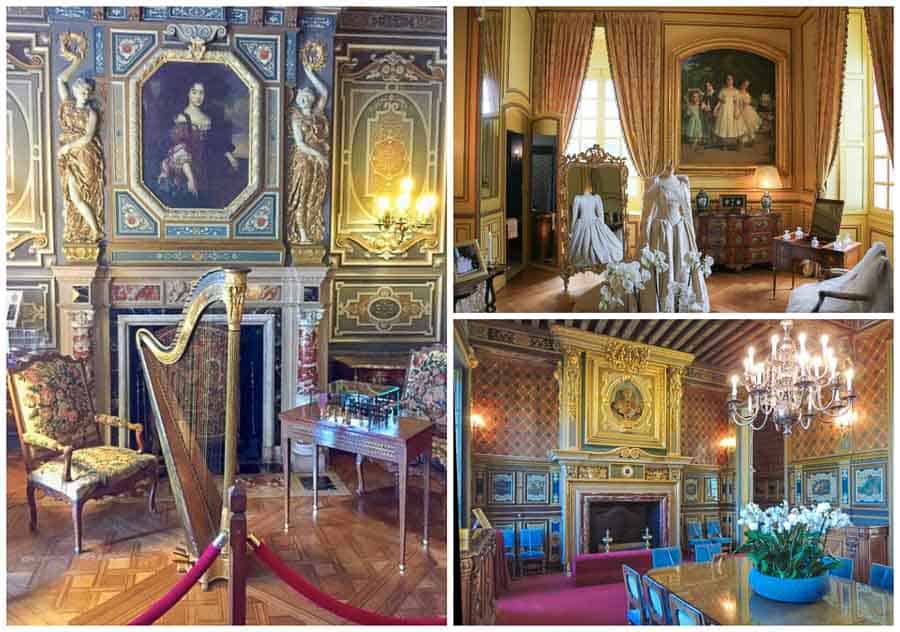
Château de Cheverny was one of the first châteaux to open its doors to the public in 1914. The castle served as the inspiration for Captain Haddock’s stately home in the Tintin comics. In addition to the extravagant collection of furniture, paintings and tapestries, the château houses a permanent Tintin exhibition.
| Opening hours: Oct. to March 10:00 am – 5:00 pm; Apr. to September 9.15am – 6.30pm. |
| Admission fee: Adults €12.50; children under 7 years enter free. |
10. Château de la Ferté Saint Aubin

Few of the Loire Valley visitors take the time to visit the Château de la Ferté Saint-Aubin, or even heard about it. It’s true that little castle doesn’t measure up to other grandiose and flamboyant castles in the Lore Valley. But what it lacks in size and glamor, it compensates in charm and seclusion.
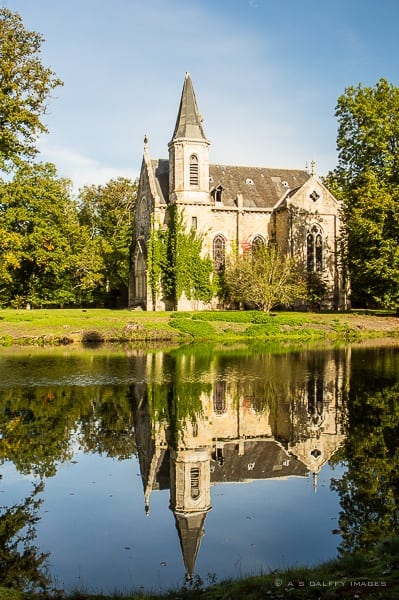
Dating back to the 17th century, Château de la Ferté Saint Aubin once belonged to the Countess of Trébon, a descendant of Trébon who served King Louis XIV as a Black Musketeer. The estate changed hands several times over the centuries, but was eventually acquired by The Piffaut Family.
The new owner decided to open the estate to the public in order to finance the huge renovation works that have been continuing for the past 25 years.
Unlike other castles in the Loire Valley, Chateau de la Ferté Saint-Aubin is a rare, non-commercialized castle, where you can actually explore every room, and even sit on the furniture.
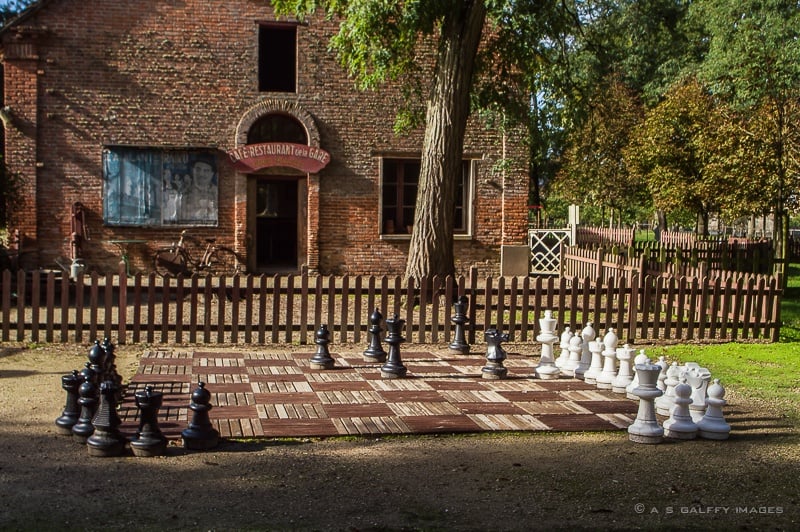
What sets this place apart from the other châteaux we visited is pristine park around it. The castle grounds have all kinds of old fashioned games and unexpected attractions.
| Opening hours: daily, from 2:00 pm to 6:00 p.m. |
| Admission fee: Adults € 9.50; Children € 6.50 |
READ NEXT: Monemvasia Castle – the Longest Inhabited Fortress-Town in Greece
Best Time to Visit the Loire Valley Castles
The Loire Valley is one one of the most amazing destinations in the world, but choosing when to visit it is very important. I personally wouldn’t go in winter everything everything is grey and gloomy and there are no flowers in bloom. Besides, some of the castles are closing their doors during winter anyway.
The best time of the year to visit the Loire Valley is in spring, between April and June. The weather is more stable and trees are in full bloom, filling the air with their aromatic blossoms. Falls are also very beautiful in France, when the leaves change color and the days are cooler.
July and August are probably the worst time of the year to visit the Loire Valley castles. The weather is extremely hot and they don’t have air-conditioning in the châteaux. Besides, all these sites get more crowds in summer due to the school holidays.
YOU MAY ALSO LIKE: “10 Spectacular Castles to Visit in Romania“
How to Save Money When Visiting the Loire Valley Castles
Châteaux tickets can get expensive, with adult admission ranging from about €7 to as high as €15. There are not a lot of discounts, but combination tickets can help a little.
Amboise Valdeloire also sells chateaux passes at discounted rates, so it’s best to buy your tickets there. They are 1 to 2 euros off the price at the castles.
Many of the castles sell food at very high prices. It’s always a good idea to bring your own food and water to save money. In most castles you can take a little picnic on the grounds
How to Reach the Loire Valley Castles
The best way to explore the Loire Valley is by car. You can rent a car for 30-40 Euros a day and explore the castles on your own schedule. The roads are good and most of the châteaux are really easy to reach.
However, if you want to use public transportation that’s O.K. too. Many of the castles are near train or bus stations. For those that are farther away, you can rent a bike for 15-20 Euros a day and bike there.
One last thing I need to mention is that all the chateaux are easy to explore on your own. There is no need to take one of the expensive tours that will rush you to a bunch of châteaux in a short period of time. Plan your visit around the trains and buses.
Please pin this for later:
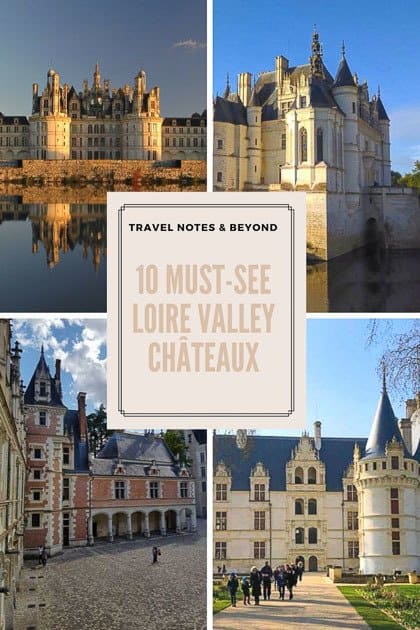

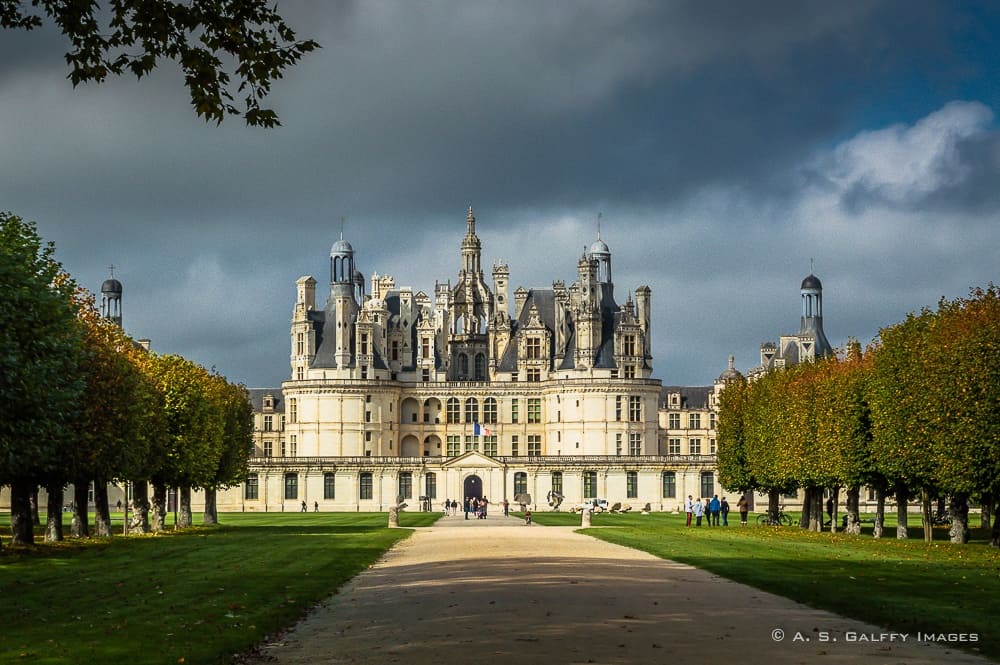
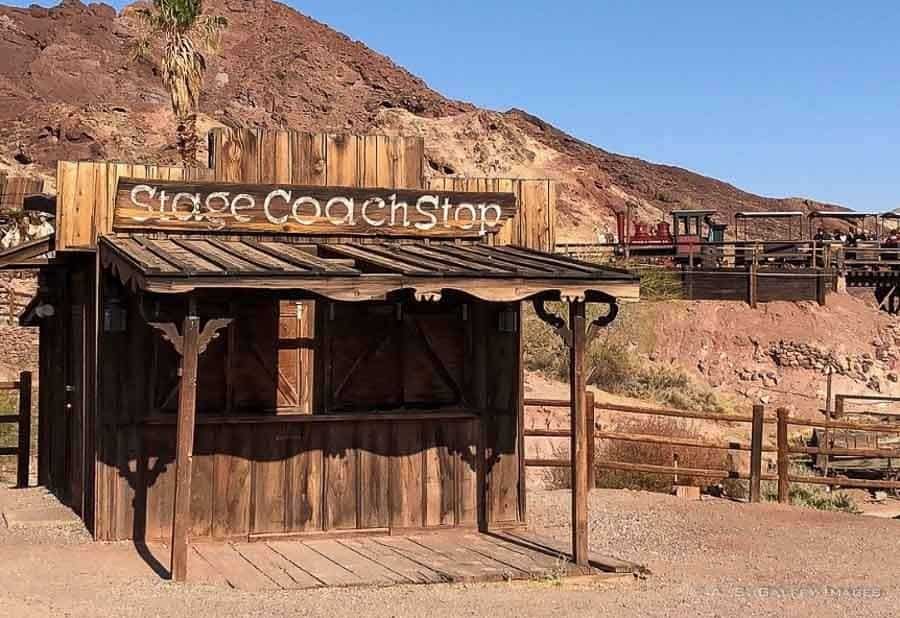 The Ultimate Guide to Visiting Calico Ghost Town
The Ultimate Guide to Visiting Calico Ghost Town

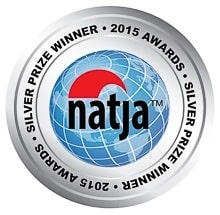

Nish
Château de Chambord is some hunting lodge ?. I never knew there were so many castles in this area. I’ve always thought and planned to visit the south of France, now I know I need to expand my itinerary to the Loire valley too!
Anda
There are over 300 castles in the Loire Valley, but only 43 of them are UNESCO sites.
Harshita
Felt as if I just stepped into a fairytale there for a while! All these Châteaus are beautiful and the history of each of them makes it all the more interesting. I did love Chenonceau for it’s significance to women’s power. Even the interiors of Château de Cheverny are quite a treat to watch, wouldn’t have expected a shade of hot pink carpet in there.
Honestly haven seen very many castles but I am already itching to do a trip just to explore these and many more all around the world. Places with history are the best.
Anda
If you like castles, the Loire Valley will surely make you feel like you are in a fairytale.
Ara Patria
What a stunning castle indeed! Whoa, I wish I could see one of them in the near future! Castle’s history is really an interesting one. Thank you for sharing some information about it!
Val
This corner of France is truly charming! It feels like stepping into the world of fairytales… Château de Sully looks amazing, it seems to be floating on the water. Also, I love the story of Chenonceau and the strong women who inhabited it!
Anda
Yea, Chenonceau is my favorite castle too because of its story.
Linda (LD Holland)
We saw some of these castles when we visited the Loire Valley. But I now know there were so many to see. A good reason to return. I saw the first few on your list. They must be the standard tour one. Chateau de Sully Sur Noire looks so much more austere that the decorative ones. And Chateau de Chaumont would be a good one to see the inside. I do love to see how people lived in those time. Next time we will rent a car and see more.
Anda
The standard tour includes about 4-5 of these, but we decided to see as many as we could. They are impressive indeed.
Sherianne
I want to return to France primarily to visit the Loire Valley, I didn’t realize there are 42 of them! I have seen many photos of Chenonceau and it is top on my list. Now that I am aware of the history and that it is a ‘women’s castle’, I am even more determined to visit. Château de Sully-Sur-Loire, Château de Chaumont and Château Azay-le-Rideau also caught my attention right away. Adding them to my map right now!
Anda
Absolutely, Sherianne. The Loire Valley is surely worth exploring.
Kaitlin Terese
I never realized there were so many castles! I agree with you, Château de Chenonceau is also my favorite that you had mentioned. To think it was going to be the Kings “hunting lodge”. That’s some hunting lodge! I loved reading the history you mentioned about this castle. I found it interesting how the castle was used from a military hospital to helping smuggle people from the Nazi’s. This castle has been through it all! Thank you for sharing!
Rhonda Albom
These castles are striking and beautiful. I notice that most have water around them (at least on a number of sides). I assume this is to make them defensible but it also adds to their beauty. I would like to see Château de Clos Luce and the Da Vinci models that are still there.
Anda
Yes, the water moats were for defense, but they make the castles look so much more beautiful.